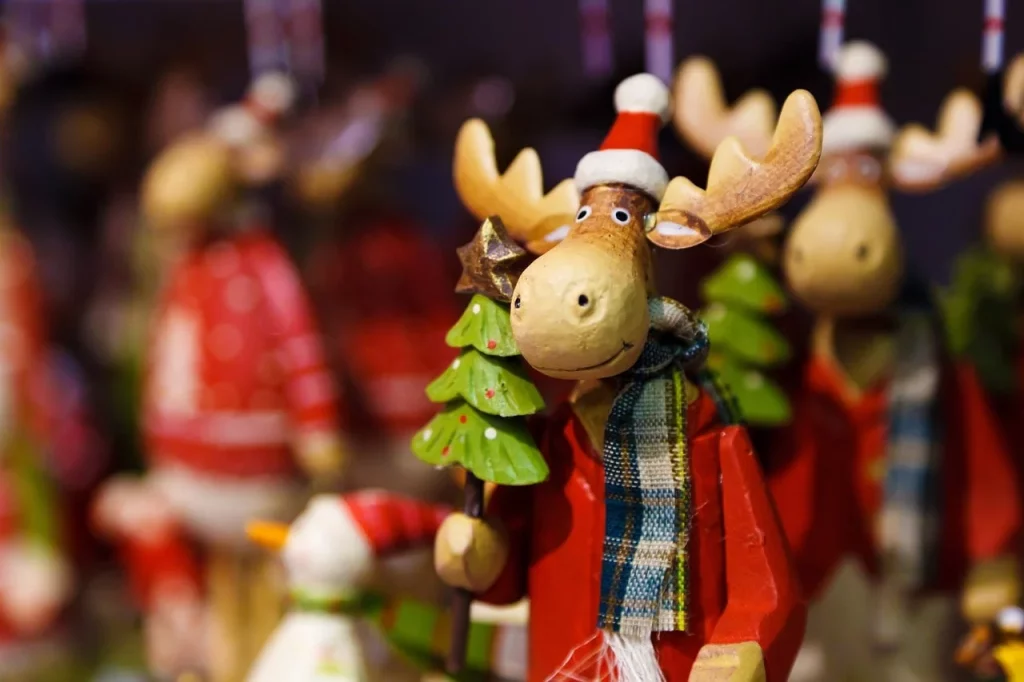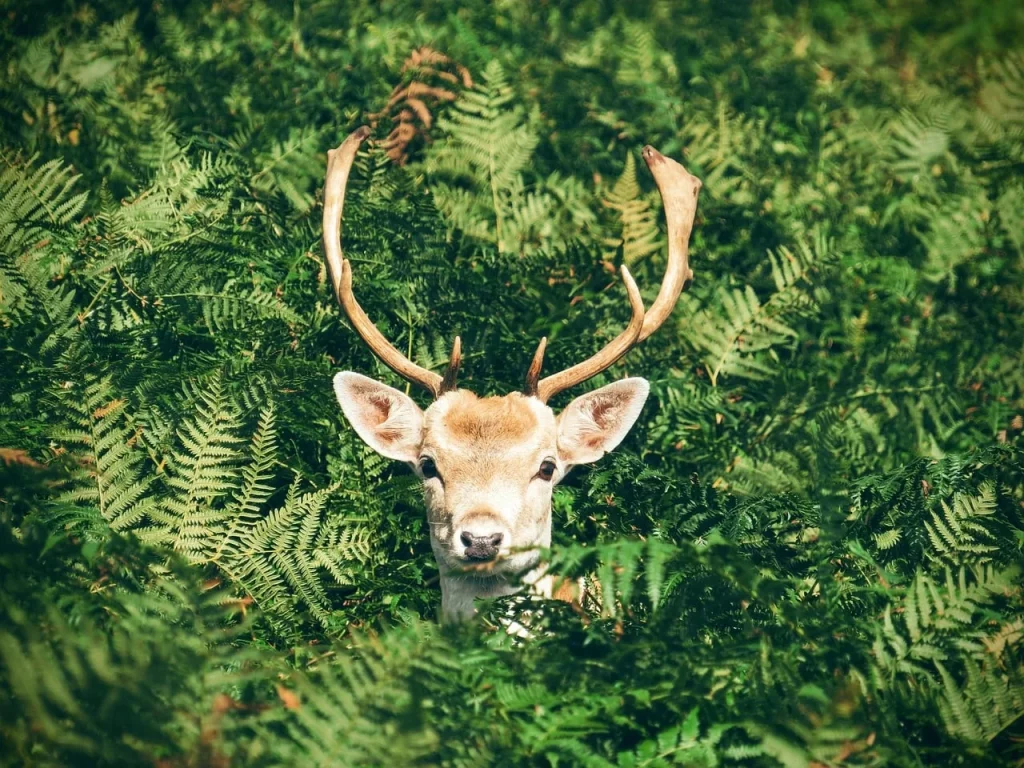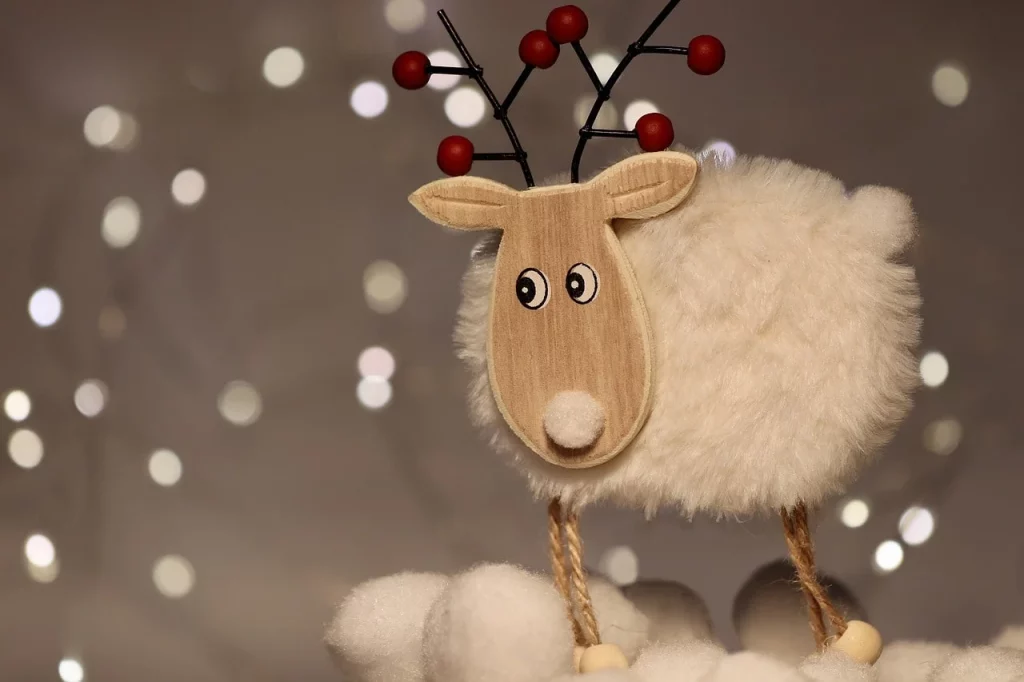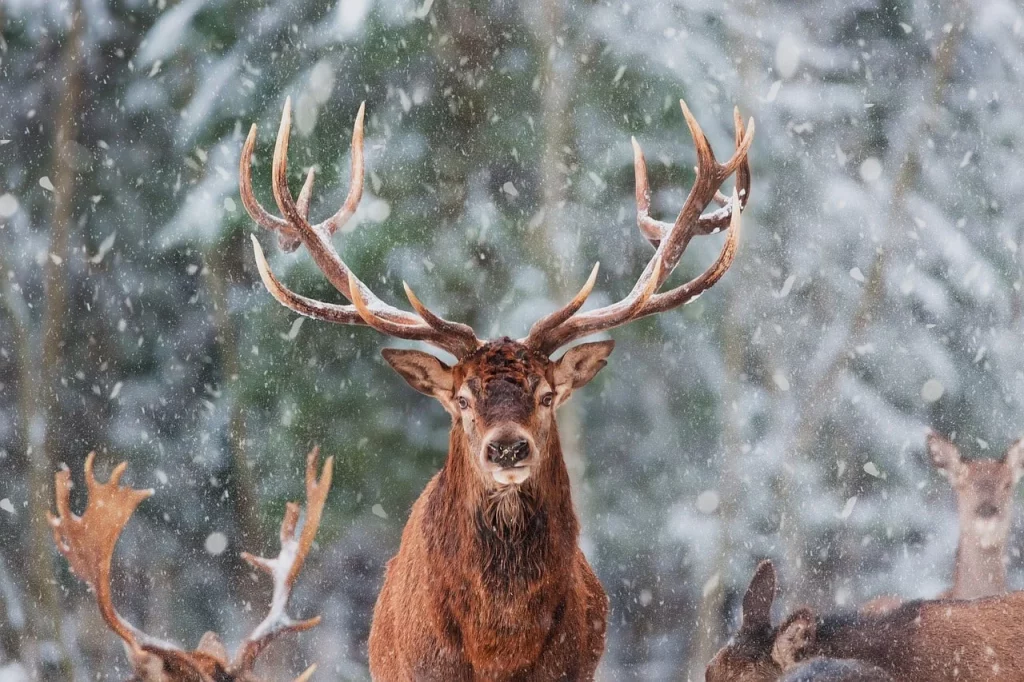Get ready to dash through the snow as we explore some remarkable facts about reindeer, nature’s very own winter superheroes. These furry friends are not just the stuff of Christmas legends; they are marvels of adaptation and endurance.
Have you ever heard of a nose so sophisticated that it can warm the air before it reaches the lungs? Reindeer have this superpower, making them the envy of every person who’s ever had a cold nose in winter.
And when it comes to social gatherings, reindeer could teach us a thing or two about networking, as they form some of the largest herds seen in the animal kingdom. Let’s start our beautiful journey.
Reindeer are not just for Christmas; they are the heartbeats of the Arctic wilderness.
David Attenborough
Reindeer Facts
Are you ready to become a reindeer expert? Pay close attention to the facts ahead, because at the end of this article, I created a quiz to see how much you’ve really learned. Read thoroughly and show off your knowledge!
- Caribou are also known as reindeer, the latter being the domesticated variety.
- Reindeer nostrils can cool down to just above freezing in winter to retain body heat.
- The antlers of reindeer represent the most rapid bone growth seen in any mammal.
- Adapting to seasons, their hooves soften in summer and harden in winter for better traction.
- Some of the longest animal migrations are made by reindeer, covering up to 3,000 miles annually.
- Uniquely among cervids, both genders of reindeer develop antlers.
- Reindeer eyes can perceive ultraviolet light, aiding their vision in the dim Arctic environment.
- Insulation against extreme cold comes from air-trapping fur.
- In reindeer groups, a dominant female usually takes the lead.
- During quick sprints, reindeer can reach speeds of up to 50 miles per hour.
- Reindeer calves are capable of standing and walking soon after birth, which is crucial for survival.
- Compared to cow’s milk, reindeer milk has a higher fat and protein content.
- Reindeer hold symbolic meaning in some cultures, representing endurance and travel.

- Primarily, reindeer feed on lichens, grasses, and leaves, making them herbivores.
- Specialized noses in reindeer pre-warm the cold air before it enters their lungs.
- Many indigenous Arctic communities herd semi-domesticated reindeer.
- Reindeer fur, containing hollow hairs, aids in floating when swimming.
- During peak growth, a reindeer’s antlers can expand by an inch daily.
- A keen sense of smell is essential for reindeer to find food beneath the snow.
- Altering habitats due to climate change significantly affects reindeer populations.
- Annually shedding their antlers is a trait unique to female reindeer.
- Reindeer employ their hooves and antlers to uncover food beneath the snow.
- Seasonally, the color of their eyes shifts from gold in summer to blue in winter.
- A herd is the collective term for a group of reindeer.
- Reindeer herding holds cultural importance in various Arctic indigenous communities.
- A distinctive clicking sound is produced by a special tendon in their feet when they move.
- The density and thickness of reindeer fur rank among the highest for mammals.
- Functioning as paddles, reindeer hooves assist in swimming.

- Reindeer serve as a crucial transportation means in certain Arctic cultures, pulling sleds.
- While wild reindeer typically live up to 15 years, they can survive longer in captivity.
- Wolves, bears, and eagles prey on reindeer, particularly targeting the calves.
- Social creatures by nature, reindeer often form large herds.
- Reindeer are pivotal to the ecosystems of Arctic and sub-Arctic areas.
- Rudolph, the red-nosed reindeer, is a well-known fictional character.
- Unique hoof prints left by reindeer can be used for individual identification.
- Migration helps reindeer find food and escapesevere weather conditions.
- Efficient heat retention is facilitated by their body size and shape.
- Farming reindeer is a significant industry in some parts of the Arctic.

- Reindeer fur varies in color from white to dark brown, aiding in camouflage.
- Warming global temperatures threaten their icy grazing lands.
- Reindeer possess a highly developed sense of hearing, which is crucial for detecting threats.
- In folklore, reindeer are often seen as magical beings capable of flight.
- A layered coat with guard hairs and a wooly undercoat characterizes reindeer.
- While swimming, reindeer can move at speeds up to 6.2 miles per hour (10 km/h).
- Environmental issues can arise from reindeer overgrazing.
- The velvet on their antlers is nutrient-rich and filled with blood vessels during growth.
- For centuries, reindeer have been an essential resource for indigenous peoples for various needs.
- Reindeer hold a significant place in Arctic mythology and folklore.
- Surviving in the Arctic is made possible by their various adaptations.
- Conservation efforts are focused on protecting their natural habitats and migration paths.
Reindeer Myths

I hope you enjoyed reading all these fun facts about reindeer. In this section, we’ll unravel the truths hidden within these tales, separating fact from fiction in their world.
- Reindeer Can Fly
This charming myth is perpetuated by the famous Christmas story of Santa Claus and his flying reindeer. In reality, reindeer are grounded animals. They are, however, excellent swimmers and can traverse large distances, which might seem like ‘flying’ across vast landscapes. - Reindeer Live Exclusively in the North Pole
It’s commonly believed that they are exclusive residents of the North Pole. In fact, they are found in various parts of the Arctic and sub-Arctic regions, including Scandinavia, Russia, Alaska, and Canada. Their habitat is not limited to just one polar region. - All Reindeer Have Red Noses Like Rudolph
The story of Rudolph the Red-Nosed Reindeer has popularized this misconception. In reality, reindeer noses are generally not red. Their noses are specially adapted to warm the air before it reaches their lungs and to sense food under the snow. - Reindeer are Domestic Animals
This myth arises from their association with Santa Claus. While some reindeer have been domesticated, especially by indigenous peoples of the Arctic regions, for transportation and other purposes, many reindeer live in the wild and are not domesticated. - Reindeer are Silent Creatures
Contrary to the belief that they are silent, they actually make a variety of sounds. During the mating season, males can be heard making loud bellowing sounds. They also have a unique clicking sound in their knees, used as a means of communication within the herd.
No products found.
Reindeer Quotes

Let’s continue to the next section. Below you will find my list of favorite quotes about reindeer. Let me know yours in the comments so I can add them to the list as well.
To understand the journey, one must walk with the reindeer.
Nils-Aslak Valkeapää
Nils-Aslak Valkeapää, a Sámi writer and musician, reflects on the importance of empathy and understanding life from the perspective of the reindeer, a central element in Sámi culture.
Reindeer remind us that journeys are taken step by step, with patience and endurance.
Lars Kullerud
Lars Kullerud, the President of the University of the Arctic, uses reindeer to symbolize the essence of perseverance and the importance of taking life one step at a time.
In the eyes of a reindeer, one can see the purity of nature.
Mikhail Zvyagintsev
Mikhail Zvyagintsev, a Russian ecologist, suggests that observing a reindeer can provide a deep and unfiltered connection to the natural world, highlighting the animal’s symbolic purity.
The reindeer’s antlers are nature’s crown, showcasing the majesty of the wild.
Elena Shumilova
Elena Shumilova, an acclaimed Russian photographer known for her enchanting wildlife photography, describes reindeer antlers as a natural crown, representing the grandeur and elegance of the wilderness.
Reindeer are the silent witnesses of the changing Arctic, adapting and enduring.
Sheila Watt-Cloutier
Sheila Watt-Cloutier, a Canadian Inuit activist, recognizes reindeer as resilient symbols of adaptation in the face of the evolving Arctic environment, silently observing and enduring the changes.
Reindeer FAQ

We are approaching the quiz section, but before that, you have to read the FAQ. Every bit of information counts.
- Can You Ride a Reindeer?
Yes, you can ride a reindeer, but it’s not as common as riding horses. They are used by some indigenous peoples in the Arctic for transportation. However, they’re not as fast as horses and have a different temperament. - Are Reindeer Endangered?
Not all reindeer are endangered, but some specific populations are at risk. For example, the Svalbard reindeer is considered vulnerable. The main threats to their survival include climate change, habitat loss, and human activities. - Can Reindeer Swim?
Absolutely! Reindeer are surprisingly good swimmers. They have a thick undercoat that traps air, providing buoyancy. Imagine them as the Michael Phelps of the deer world, gliding through chilly Arctic waters with ease. - Are Reindeer and Caribou the Same Thing?
Yes, they are! The term “reindeer” is used in Europe and Asia, while “caribou” is used in North America. It’s like how Americans say “soccer” and the British say “football” – same game, different names. - What Does a Reindeer Eat?
Reindeer are primarily herbivores, and their diet mainly consists of lichen in the winter (they’re the only large mammals that can digest it) and grasses, leaves, and mushrooms in the summer.
No products found.
Reindeer Trivia

Welcome to the Ultimate Reindeer Quiz! Better watch out, because if you don’t get any questions right, you might just find a reindeer parked in your living room!
Conclusion
As our exploration of reindeer concludes, it’s clear these animals are more than fairy tales and folklore. They’re symbols of endurance, adaptability, and the interconnected web of life. The reindeer’s journey is a mirror reflecting our own relationship with nature – one that requires respect, understanding, and conservation.
Let’s continue to marvel at these creatures, not just during festive seasons but as year-round ambassadors of the wild. And, for our classic funny question: if reindeer could participate in the Olympics, which sport do you think they’d excel in? Let me know in the comments.
1 Source Used For This Article

